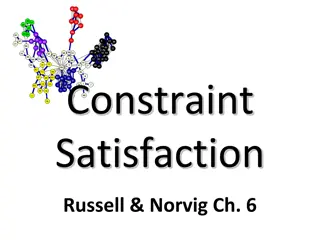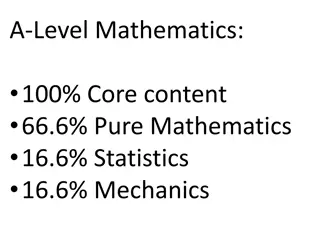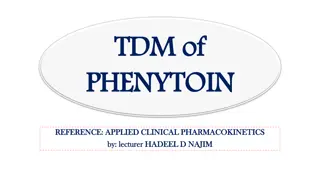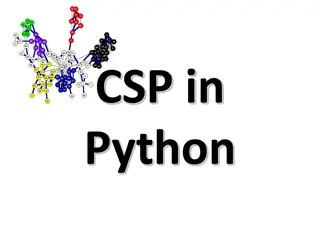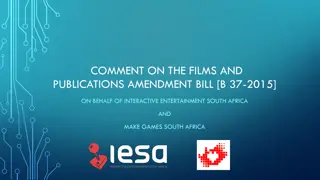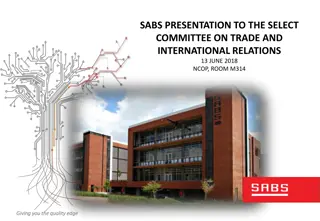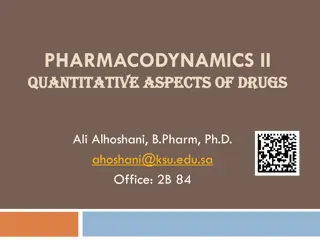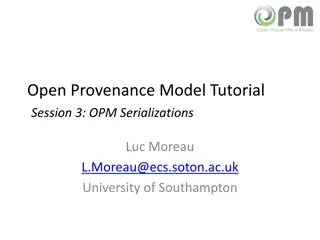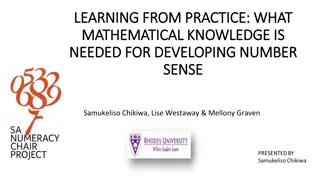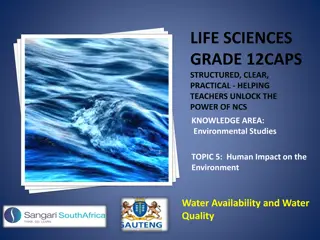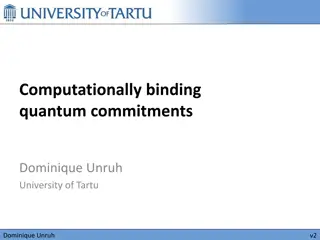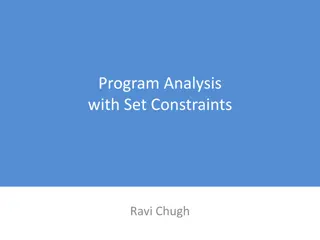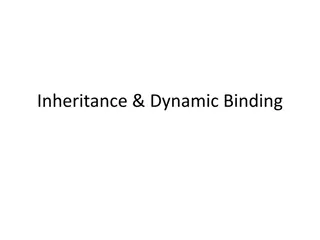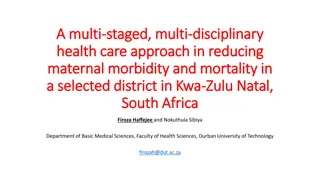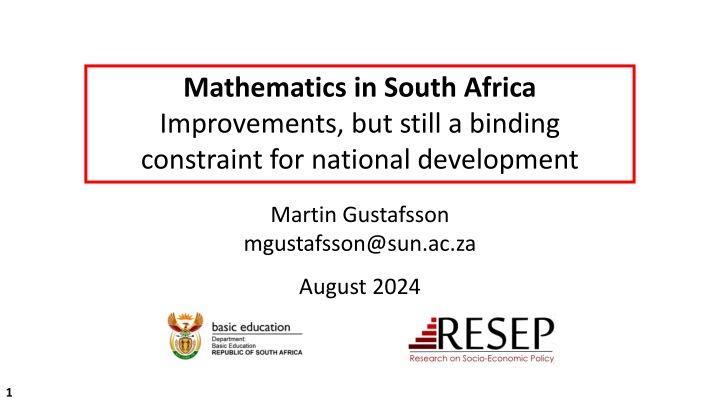
Improving Mathematics Education in South Africa: Key Insights
Explore the challenges and progress in mathematics education in South Africa, highlighting demographic disparities, school vs. university demand for math skills, and government targets. Gain valuable insights for enhancing national development through improved mathematics education.
Download Presentation

Please find below an Image/Link to download the presentation.
The content on the website is provided AS IS for your information and personal use only. It may not be sold, licensed, or shared on other websites without obtaining consent from the author. If you encounter any issues during the download, it is possible that the publisher has removed the file from their server.
You are allowed to download the files provided on this website for personal or commercial use, subject to the condition that they are used lawfully. All files are the property of their respective owners.
The content on the website is provided AS IS for your information and personal use only. It may not be sold, licensed, or shared on other websites without obtaining consent from the author.
E N D
Presentation Transcript
Mathematics in South Africa Improvements, but still a binding constraint for national development Martin Gustafsson mgustafsson@sun.ac.za August 2024 1
SA-SAMS teacher Schools-colleges subject- level student-level learner-level Power HEDA NSC learner- Contents aggregates 2017-2021 dataset dataset TIMSS data data 1. The demographics of mathematics outcomes 2. School supply versus university demand 3. NSC trends and what TIMSS says about the pipeline 4. Are NSC results comparable across provinces? 5. TIMSS-NSC discrepancies in provincial rankings 6. The enigma of rural being better than urban 7. The supply and use of mathematics teacher time 8. Mathematics in schools and entry into TVET Policy pointers Anonymised versions exist for wider research use. 2
Though now some 70% of 60-achievers are black African or coloured, probability of obtaining 60 still 6 times higher among white and Indian. The demographics of mathematics outcomes Denominator calculated from EMIS data. Females have recently caught up to males w.r.t. this metric. This is based on public NSC data. Some one-third of white and Indian youths are in IEB. Inequalities have been narrowing (e.g. in TIMSS Grade 9), but they need to narrow further. Growth in mathematics essential for the economy. In a context where almost half of learners are not passing mathematics, at the 30-mark level, the problem is clearly not insufficient participation in mathematics (as opposed to maths lit). Gustafsson, 2016, 2023; Van der Berg & Gustafsson, 2017. Kuluvhe et al, 2022; Hill, 2019. 3
Despite large increases in NSCs with Bachelor- and Diploma-level endorsements, from a university perspective there is a concerning under-supply of mathematics skills from schools, even though university mark thresholds are quite lenient. School supply versus university demand This represents two-thirds of first-year university students. This compari son is optimisti c insofar as it assumes anyone with good school mathem atics pursues mathem atically- Mathematics clearly a binding constraint. University sector should probably make the demand more transparent. University demand calculated by (1) drawing student-weighted sample of 30 university- specific CESM first order from universe of 548, and then (2) checking entrance requirements on university websites. oriented universit 4 Gustafsson, 2023.
Government targets can afford to be somewhat optimistic, given the bulge coming through the mathematics pipeline. NSC, TIMSS and the pipeline The NDP s 450,000 target is incredibly unrealistic, while MTSF s 60- achiever targets were too modest. Youths exceeding the high benchmark of 550, roughly an indicator of who gets 60% in NSC. Targets must be empirically informed the process can help identify good strategies. International evidence demonstrates that where the bulge lies is important. Speed of improvement here is empirically informed, but without taking into account pandemic effects. 5 Gustafsson, 2023.
Despite little in e.g. the Umalusi reports on inter- provincial comparability, this does not appear to be a problem. Are NSC results comparable across provinces? Prediction at a national level using four predictors: English First Additional Language, Life Sciences, Physical Sciences and Geography. This means e.g. for 2022 27,535 candidates with all five subjects and with actual mathematics mark in range 40 to 70 used. Umalusi and DBE could be more explicit about provinces when standardising. E.g. here NW mathematics candidates who got 50 should have obtained 51. Of course, the explanation may be that they should have obtained lower marks in other subjects. We don t know. Gustafsson, 2023.
It appears that e.g. Limpopo s weak primary but strong secondary mathematics is driven by repetition and grade survival. TIMSS-NSC discrepancies in provincial rankings If the vertical was percentage of candidates, R squared would be 0.973. LP and MP advantage far more pronounced if just black learners considered. of successful provinces. Not necessarily reflection These three provinces should sit further to the left due to many out-of- school not participating in Grade 9 TIMSS. We should only insist on lower repetition in the final grades if we know this will not harm existing mathematics pipelines. Gustafsson, 2023; Department of Basic Education, 2024a.
If all population groups are considered, urban out-performs rural, but this is reversed when only black African and coloured learners are considered. The enigma of rural being better From learner-level data of all black learners turning 15 in 2018 with NSC results up to 2023. Motheo (incl. Bloemfontein): 2.8% Thabo Mofutsanyana (TH): 3.8% eThekwini metro: 3.1% Rest of KwaZulu-Natal: 3.2% All 4 Johannesburg districts: 3.4% Capricorn (incl. Polokwane): 5.2% Vhembe: 4.8% Interventions should learn from rural successes, and make special provision for urban challenges. Department of Basic Education, 2024a. All 4 Cape Town districts: 2.9% OR Tambo inland (incl. Mthatha): 4.1% 8
The time of recently qualified mathematics teachers seems relatively well utilised. Supply and use of mathematics teacher time Time estimated from grade- and Given matching concerns in the policy debates, more monitoring of this kind needed, using SA-SAMS data. A vital question not addressed here is the following: To what extent are mathematics learners taught by qualified mathematics teachers, and how might this affect mathematics outcomes (this latter part is not straightforward). subject-specific teaching load. This comes from linking 1,582 graduates from 2018 in DHET data to SA-SAMS. The median teacher who qualified recently to teach mathematics spends about 40% of her time teaching the two specialisation subjects. This may seem low, but the remaining 60% is spent mostly on related subjects. 9 Department of Basic Education, 2024b; Van der Berg et al, 2023.
Analysis made possible by recent DBE-DHET data collaboration. Mathematics in schools and entry into TVET Around 38% of first-time TVET students pursue STEM ( engineering ). This graph based on logit regression and entry into TVET during 2017 to 2021. Mathematics, but also engineering, at school are key factors determining STEM pathway among TVET entrants (but are not key in determining whether youths enter a college at all). If subject-specific predictors removed, Bachelors is most strongly positive. Several school-college alignment issues, e.g. just under half of TVET entrants enter a progamme that is two NQF levels below the level completed at school. We should take seriously the broader project of a comprehensive youth-tracking system, linking DBE and DHET data we already have. But white and Indian only 4% of first-time STEM students. FS clearly strongest if all TVET considered, but this driven by non-STEM. For STEM, LP and MP strongest. Noteworthy that STEM graduates have better employment prospects among college students. Department of Basic Education, 2024c; Department of Higher Education and Training, 2024. 10
Policy pointers Research and monitoring Policy and strategy Make the demand for mathematics among school- leavers by universities more explicit, and do this on a routine basis. Use distributions and trends in mathematics output in schools to guide target-setting. Place a greater emphasis on the comparability of NSC mathematics results across provinces. Examine more closely why provinces such as Limpopo produce so many high-level mathematics achievers. To a greater extent, apply realistic targets to secondary schools which speak to university demand, where mathematics is key. De-emphasise participation in mathematics, relative to achievement of high marks in this subject. Only push for less grade repetition if it is sufficiently clear this will not harm existing pipelines of mathematics excellence. Strive for more alignment across these institution types. For instance, should colleges be financially incentivised to target younger learners? Be careful about overly mechanistic or simplistic approaches to matching qualifications to teaching. Make better of existing data in monitoring flows between schools, colleges and universities. Use SA-SAMS data to understand the utilisation of teacher time, and the impact of this on outcomes. 11
Sources Sources with an asterisk (*) are not available online, but can be requested from the author. Department of Basic Education, 2024a. Review of progress in the basic education sector to 2024: Analysis of key statistics. Pretoria. [Forthcoming] Department of Basic Education, 2024b. Specialisation-specific teacher supply and employment in the 2019 to 2022 period . Pretoria. [Forthcoming] Department of Basic Education, 2024c. Flows between schools and colleges reflected in student-level records over 2015 to 2022. Pretoria. [Forthcoming] Department of Higher Education and Training (2024). Destination of technical and vocational education and training (TVET) college graduates. Pretoria. Gustafsson, M. (2016). Understanding trends in high-level achievement in Grade 12 mathematics and physical science. Pretoria: Department of Basic Education. * Gustafsson, M. (2023). Trends and targets with respect to NSC results permitting entry into mathematically-oriented programmes at a university. Pretoria: Department of Basic Education. Hill, R. (2019). Does IEB make the grade? Alternative testing methods and educational outcomes: The case of the IEB in South Africa. Cape Town: University of Cape Town. Kuluvhe, N., Bhorat, H., Oosthuizen, M., Asmal, Z. et al (2022). Skills supply and demand in South Africa. Pretoria: Department of Higher Education and Training. Van der Berg, S. & Gustafsson, M. (2017). Quality of basic education: A report to Working Group 1 of the High Level Panel on the Assessment of Key Legislation. Cape Town: Parliament. Van der Berg, S., Van Wyk, C., Gustafsson, M. et al (2023). What rich new education data can tell us. Stellenbosch: University of Stellenbosch. 12

